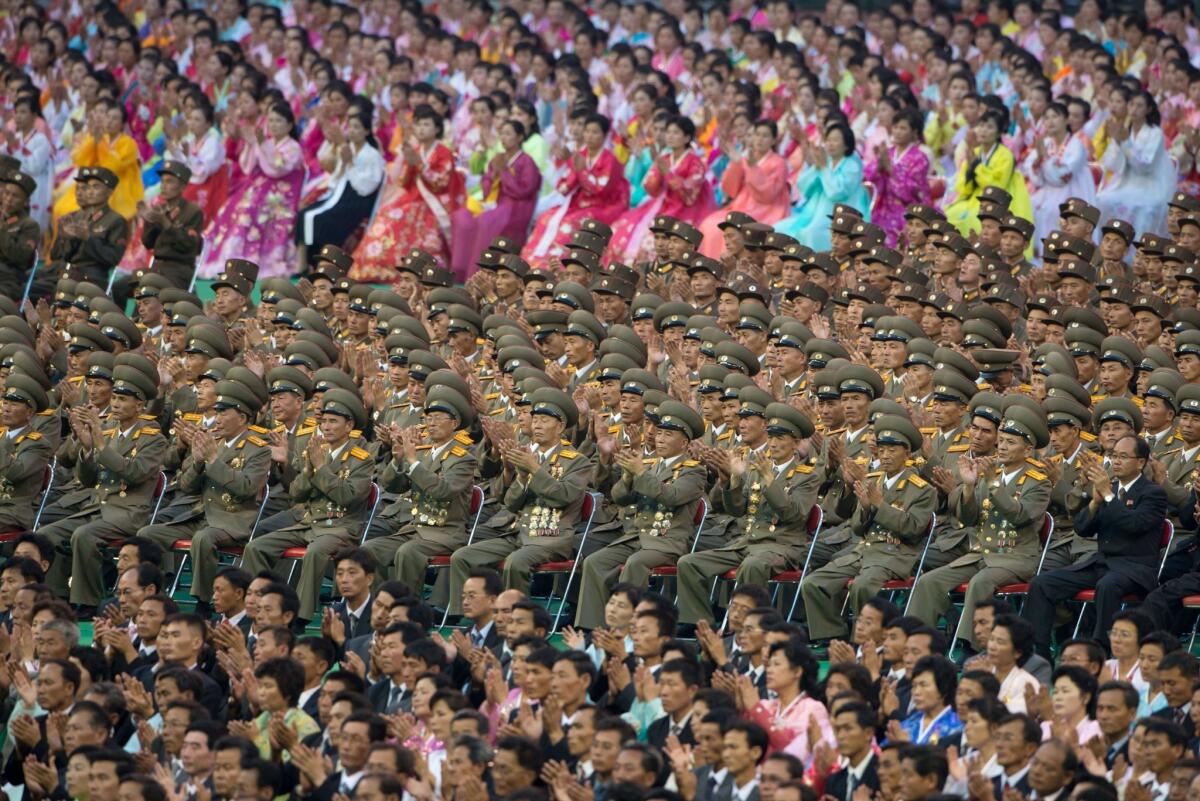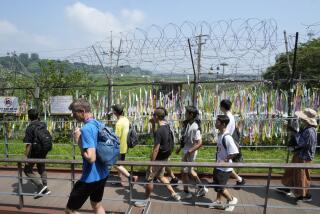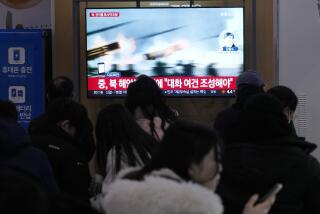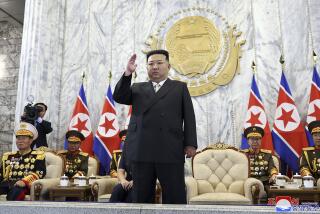Sixty years of Korean armistice: One war, two histories, no peace

On one side of the world’s most heavily fortified border, North Koreans are celebrating Saturday’s 60th anniversary of the armistice that halted the Korean War with Victory Day fireworks and a military parade.
In South Korea, Armistice Day is a time for somber reflection – on the 1.2 million killed on both sides of the 38th Parallel, on the division that cleaves families these six decades later and on the long-elusive quest for a peace treaty to formally end the conflict.
North Korean leader Kim Jong Un is only the third in the dynasty that has ruled over the communist state since the postwar division, when the 38th parallel defined and reinforced in 1950 became the de facto border between the Korean peninsula’s two autonomous states.
Barely 30 and largely seen as untested and unpredictable, Kim wove militaristic reminders into the Victory Day celebrations of the armistice, ignoring his bombastic declaration in April that North Korea no longer felt obliged to live up to its conditions.
Pyongyang has also taken the unusual step of allowing in a planeload of Western journalists to cover the events. Authorities also granted visas to a few aging U.S. military veterans seeking a glimpse of the land where they battled as young men against Soviet- and Chinese-backed communist forces commanded by the current leader’s late grandfather, Kim Il Sung.
Orchestrated encounters between the visitors and young North Koreans, who spouted profane invective against the United States, were probably intended to project confidence and independence, though their similarity had the ring of memorized propaganda.
South Korea used the occasion to show off its superior military capabilities with a reenactment of an early battle of the 1950-53 war and a display of aerial acrobatics.
Seoul officials invited representatives of all 21 countries that sent troops to the United Nations force that helped push back the invaders, who at one point had driven millions of people below the 38th parallel to a collection of packed refugee camps around the southeastern port of Busan.
The approach of Saturday’s anniversary has spawned an array of conferences, scholarly papers and films depicting the wartime suffering and lamenting the two Korean states’ failure to negotiate a formal and lasting peace.
Among the recent accounts of the suspended conflict is “Memory of Forgotten War,” a documentary by Bay Area filmmaker Deann Borshay Liem and her Boston College professor brother-in-law, Ramsay Liem. It follows the tragic lives of four Koreans whose families have been divided for 60 years and the irreconcilable ideologies that keep them apart.
South Korean President Park Geun-hye met Friday with New Zealand Prime Minister John Key, whose country sent 6,000 troops to bolster the overrun South Korean forces. She later placed flowers in memory of the dead.
U.S. veterans of the Korean War were also observing the anniversary at commemorations in Washington, where dozens gathered at the Korean War Veterans Memorial to share stories of wartime hardship or hellish experiences as prisoners of war in the North. President Obama declared Saturday Korean War Veterans Armistice Day and urged Americans to “observe this day with appropriate ceremonies and activities that honor our distinguished Korean War veterans.”
ALSO:
Tunisia blames Al Qaeda-linked militants in assassination
Snowden won’t face torture or execution, Holder tells Russia
Egypt rivals clash after Morsi is charged with espionage, murder
carol.williams@latimes.com
@cjwilliamslat
More to Read
Sign up for Essential California
The most important California stories and recommendations in your inbox every morning.
You may occasionally receive promotional content from the Los Angeles Times.











